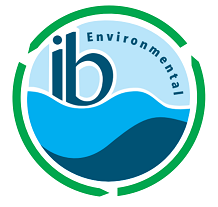How Can Water Utilities Find the Money to Help Their Low-Income Customers?
Photo by Chronis Yan on Unsplash
By Stacey Isaac Berahzer
Many utilities recognize that the need to continuously increase water and wastewater rates means that some customers will be unable to afford the higher rates. Throw new or increasing stormwater fees into the mix, and the problem is exacerbated. But, rate increases are usually necessary to maintain infrastructure and, in many cases, address backlogs. How can a utility find the funds to help its most vulnerable customers? Each state is a little different. But, there is one thing that has historically set Georgia apart when it comes to how water and wastewater utilities fund a customer assistance program (CAP) for low-income customers.
The well-initiated may guess that the unique feature in Georgia is the fact that the state’s Public Service Commission does not regulate any water or wastewater utility, private or public. It’s a good guess since there are only six states that fall into this group. However, more pertinent to funding CAPs is the “Gratuities Clause” in the state constitution. While most states do have some type of “gift clause,” Georgia’s has been perceived as particularly potent. There is a concern that providing assistance to a water customer would be considered an unconstitutional donation. This concern is only relevant when the money for the assistance is coming from other rate-payers. But, is the concern outdated?
How to Tap into Rate Revenues
Of the utilities in the state of Georgia that have implemented CAPs, some do use rate revenue to fund the program. The city of Atlanta, though an obvious outlier in the state due to its size and high rates, provides one such example. Atlanta has capitalized on Georgia’s strong home rule set-up by incorporating language into the City’s own code underscoring how using rate-revenue does not violate the Gratuities Clause. Over the last decade, Atlanta has made the business case for financing some of its Care and Conserve assistance program with rate revenue. For example, in 2013, the City code was amended to include specifically that “water and sewer revenues of the City's drinking water and wastewater system” could be used for the CAP. This paved the path for the provision of $1 million in water and wastewater revenue funds for Care and Conserve in 2016.
It’s important to note that Atlanta’s assistance program dates back to at least 1995 though. So, the program was funded by various other sources, including some of those below, before the 2016 rate revenue injection.
Beyond Rate Revenues - Other Funding Sources for CAPs
Even if a utility does tap into its rate revenues for the CAP, a best practice is to use a diverse set of funding mechanisms. The following is a list collected over the years.
Bill round-up and opt-in programs – Offering paying customers the option to assist their neighbors who are struggling financially is a fairly common and benign way of funding a CAP. Anecdotal evidence suggests that it raises relatively small amounts of money. However, the opportunity for public education, and possibly an improved image of the utility as a member of the community, tend to make this method worth the effort. Here the customer agrees to have the “extra” money from his/her payment go to help others with their bills. Sometimes, a utility allows the customer to “opt-in” to contribute a certain amount on a one-time basis, or even on a regular basis.
Royalties from a service line insurance program – The service line runs from the meter to the house and is usually the responsibility of the customer, should any problems arise. Some water utilities allow a third-party company to provide insurance on the service line to the customers. The royalties that the utility receives from the third-party company can be used to fund a CAP. These funds represent a discrete pot of money that is an alternative to using rate revenue.
Cell tower lease revenue – In some communities, cell phone companies are interested in leasing space from the water utility for cell towers. The revenue from this leasing also represents a discrete pot of funds that can be an option instead of rate revenue in relation to CAPs.
Partnerships with other utilities – A water utility may have an arrangement with another utility, such as a gas company, whereby when customers call the water utility to establish a new account, the water customer service representative discuss the partnership with the gas company. The gas company then pays a royalty to the water utility for any customers that result from this referral. Some water utilities have reserved these royalty funds for assisting low-income customers.
If you are aware of a source that is not on this list, drop us a line, or add a comment below.
Conclusion:
In a crisis situation, it seems possible that charitable foundations would eventually consider it feasible to fund programs like CAPs. After all, CAPs get assistance directly to low-income customers for a very basic human need. Why not get the infrastructure in place now to facilitate those potential funding sources?
For those utilities that want to start a CAP without tapping into rate revenues, there are several viable sources of financing to consider. However, these sources usually only provide a small amount of funding relative to the need in funding a robust CAP. And though the Georgia Gratuities Clause has historically been a hurdle to funding CAPs with rate revenues, there seem to be ways to overcome this hurdle. In fact, some utilities have already created the playbook on this.
There were several blog posts that provide case studies of CAPs in Georgia. See the list below to learn more:
Henry County Water Authority - Charitable Assistance Program
City of Atlanta Department of Watershed Management - Care & Conserve Program
Toho Water Authority - Toho Assistance Program (Florida CAP)
Gwinnett County Department of Water Resources – Water Resources Assistance Program (WRAP)
In addition, if your utility is looking for suggestions on how to fund these types of assistance programs, see this blog post, How can water utilities find the money to help their low-income customers?
This is part of a blog post series funded by the Georgia Environmental Finance Authority (GEFA).
Disclaimer: The opinions of the writers should not be considered legal advice or endorsement by GEFA.

